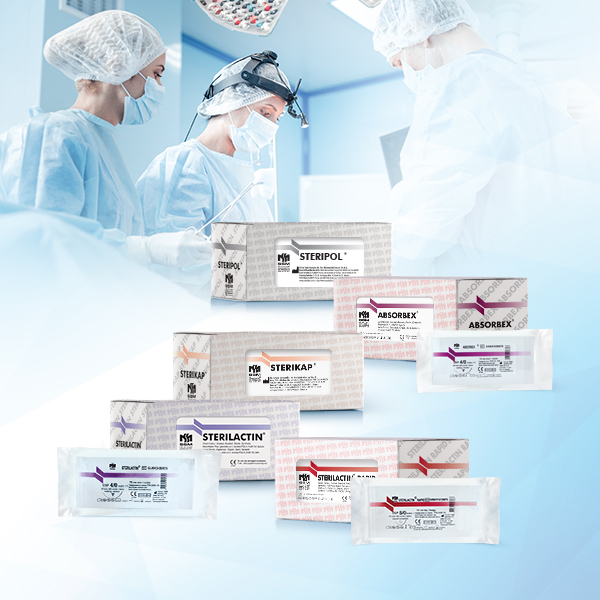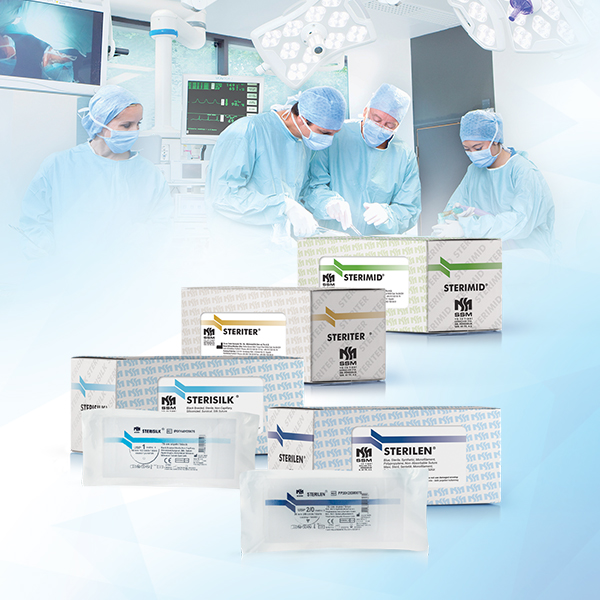SURGICAL SUTURE
Sutures, used to restore tissue integrity and control bleeding during surgical operations, have remained an indispensable element of medical surgical interventions for over 4000 years.
They are produced from 100% hydrophilic cotton, suitable for sensitive skin, and intended for daily makeup removal.
Suture materials are different types of materials used in surgical procedures or for restoring the integrity of any wound or damaged tissue, supporting wound healing and preventing infection, restoring natural functions, controlling bleeding, providing temporary or permanent wound support, or for fixation of implants. The procedure involves suturing, ligating, or approximating the ends of blood vessels. Suturing brings tissue edges together and maintains them until healing occurs.
When choosing sutures, the needle and thread characteristics should first be known. The tissue type, tissue characteristics, and healing process are evaluated. The compatibility of the suture with the tissue should be assessed including tensile strength, passage through tissue, ease of use, knot security, tissue drag, short and long-term tissue reactions, handling, and thread memory. Surgical sutures should be easy to hold and manipulate, usable in all types of procedures, absorbable after tissue healing, have high tensile strength, high knot security, be sterile, and non-capillary.
When determining the usage areas according to the properties of the surgical suture, factors such as strength, absorption rate, loss of tensile resistance, elasticity, plasticity, peelability, coefficient of friction, thread shape, biological degradation properties, physical structure, capillarity, tensile resistance loss, and total absorption time should be considered.


